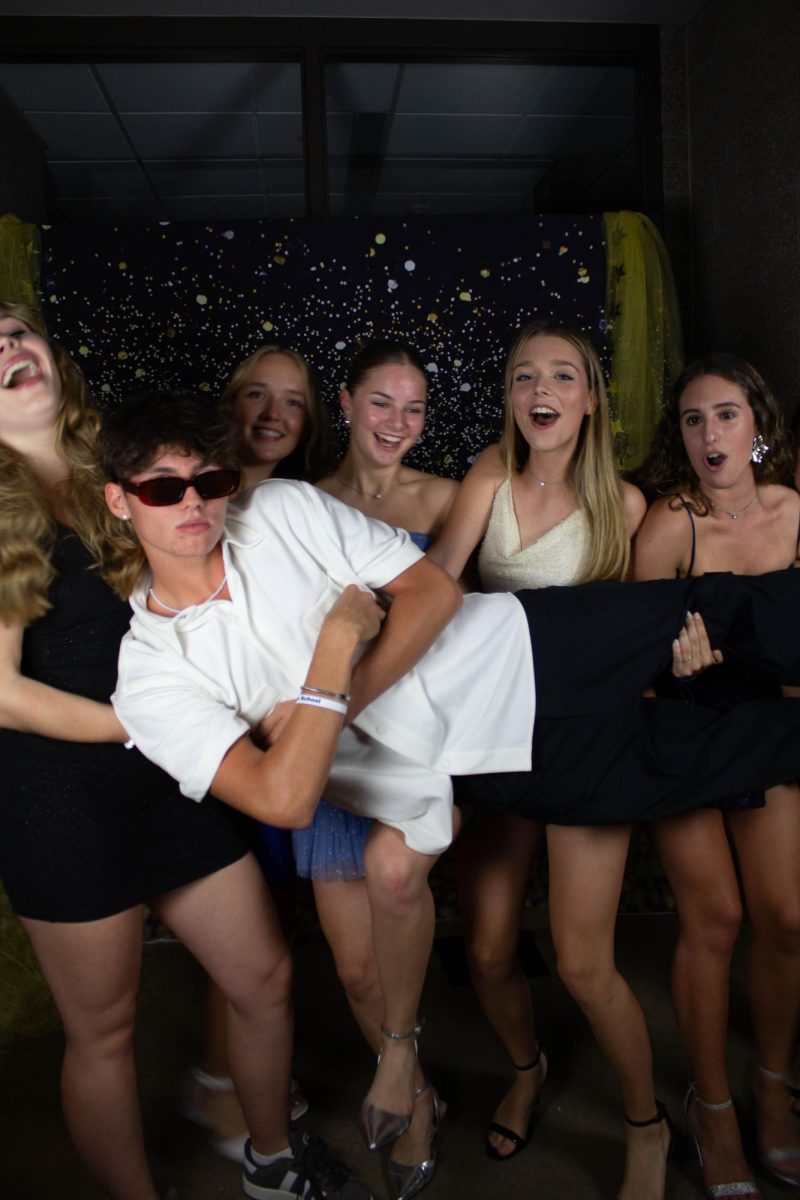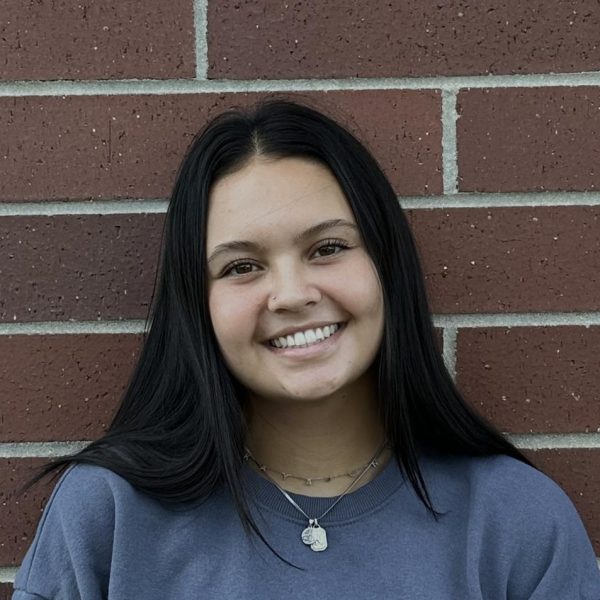Happy National Voting Day! While you may be sick of political ads or hearing adults bicker about candidates, elections really do matter. One of the most patriotic things an American can do is to vote in every election to improve their community.
Unfortunately, those under 30 have historically neglected the importance of voting. In the 2016 election, under 40% of Americans between 18 and 24 voted while nearly 70% of those 65 and older voted. That election resulted in the oldest average age for members of the House of Representatives in American history. By contrast, around half of Americans 18 to 24 voted in the 2020 election, and the youth vote in 2022 was the second highest in 30 years–an election that also saw the first member of Gen Z elected to Congress.
If you want people like you who share your views to be the ones making decisions in government, then you need to support them with your vote. Voting isn’t difficult, but it does take some work to ensure you are registered to vote, ready to vote, and know how your vote is counted.
Who can vote in Colorado?
To register to vote in the centennial state, a person must a US citizen and be a Colorado resident for at least 22 days before the election (this year, that cutoff date is October 15). Even if a person is unhoused, moving during the election, or in temporary housing, Colorado provides options to ensure these people can still vote.
A person also cannot be actively serving a sentence of house arrest or imprisonment for a felony when they register (though felons can register once their sentence is finished, commuted, or changed to parole). This includes youth correctional facilities.
Finally, a person must be 18 years old by the date of the election (November 5 of this year) to vote in that election. However, Colorado teens can pre-register to vote after they turn 16–this makes them automatically eligible to vote on the day they turn 18.
How do I register to vote?
First, make sure you have your Colorado driver’s license, your state-issued ID card provided by the Colorado Department of Revenue, or your social security number.
The easiest way to register is to do so online at GoVoteColorado.gov. If your preferred language is Spanish, there is a Spanish translation button near the top of the page.
While registering online takes less than five minutes, that doesn’t mean you become a voter in five minutes: there is an eight-day waiting period so your voter information can be checked and verified. If you plan on voting on Election Day and want to register online, you must do so by October 27.
You can also fill out a physical voter registration form, which can be found on the Colorado Secretary of State’s website and at any federal post office (the closest one to FHS is at 411 Oak Street in Old Town Frederick). Once you complete the form, mail it to your county clerk and recorder’s office:
- If you live in Weld County, your clerk and recorder is Carly Koppes, and her office’s mailing address is PO Box 459, Greeley, CO 80632. You can also email her office a PDF of your completed form at [email protected].
- If you live in Boulder County, your clerk and recorder is Molly Fitzpatrick, and her office address is 1750 33rd St., Ste. 200, Boulder, CO 80301.
Physical forms need more time to process and must be mailed no later than 22 days before the election; this year, mail registration must be sent by October 15.
You can also register to vote in person at your county clerk and recorder’s office or DMV location. You can do this any day the office is open, even on Election Day. That’s right–you can register and vote on the same day. All you need to bring is your Colorado ID.
If you have any difficult with registering or pre-registering to vote, every high school in Colorado has one teacher who is an official election liaison that can assist you. At Frederick High, our election liaison is Mrs. Revielle.
Do I have to join a political party when I register?
Short answer: No.
On your voter registration, you will be asked to select a political party. Parties with official affiliation in Colorado are (in order of size) the Democratic Party, the Republican Party, the Libertarian Party, No Labels, the American Constitution Party, the Green Party, Approval Voting Party, the Unity Party, the Center Party, and the Forward Party.
If you register for a political party, you are eligible to attend and vote in their state caucus, a meeting where presidential electors and other party officials are chosen. You also get to vote in that party’s primary election, where the party selects its nominees for the November elections.
If you do not want to join a political party, select “I would like to be unaffiliated.” At time of writing, 48.6% of all active registered Colorado voters are unaffiliated. While unaffiliated voters do not get to participate in any party caucuses, they are allowed to vote in either the Democratic or Republican primary (but not both) each year.
You can also change your party affiliation at any time.
I’ve registered! Now how do I vote?
Short answer: on a ballot that looks something like this.
Every Colorado voter automatically gets an election ballot in the mail if they meet the registration deadlines. These mail-in ballots use barcode verification to prevent fraudulent or duplicate ballots. Ballots will start being mailed to Colorado residents this year on October 11 and should arrive at your address by October 18.
If you are a first-time voter, you must include a photocopy of your driver’s license or state ID with your mail-in ballot for your ballot to be counted. Do not send a copy of your Social Security card!
Before you mail your ballot, make sure you have put your signature on the envelope!
For a mail-in ballot to be counted, it must be received by the county clerk and recorder no later than 7:00 p.m. on Election Day. A good rule is to mail your ballot at least 5 days before Election Day, so try to have your ballot in the mail by Halloween (October 31) this year.
You can also drop off your mail-in ballot at any polling place or election drop box before the Election Day deadline. The closest drop box to Frederick High School will be at the Carbon Valley Recreation Center (701 5th St, Frederick).
You can also vote in person on Election Day at your local polling place. To know where to go, look up your voter registration on the Colorado Secretary of State’s website and click the “In-Person Voting” tab. You can vote at any polling place in your county on Election Day between 7:00 a.m. and 7:00 p.m. The volunteers will check your registration and verify who you are using your driver’s license, state ID, or other accepted type of documentation. You then can fill out a paper ballot or use a voting machine.
Both Boulder and Weld Counties have access to Spanish-language ballots upon request.
How do I know what’s on the ballot?
Short answer: the Blue Book.
By state law, all Colorado register voter must be mailed a ballot information booklet “to provide voters with the text, title, and a fair and impartial analysis of each initiated or referred constitutional amendment, law, or question on the ballot.” The cover of this booklet is blue, so it’s come to be known as the Blue Book.
For every statewide measure, the Blue Book includes:
- a summary of what the measure aims to do
- the major arguments for the measure
- the major arguments against the measure
- a brief assessment of how the measure will impact taxes and the state budget
- the full text of measure as submitted
The Blue Book ballot measures for this year’s election can be found here., and the judicial performance evaluations here. You can also access them in Spanish or as an audiobook.
Colorado also has elections for the retention of judges on the Colorado Supreme Court, the Colorado Court of Appeals, State Judicial District Courts, and County Courts. Instead of getting elected to their position, judges are appointed and then, every few years, voters elect to retain (keep) the judge or dismiss the judge. The Blue Book contains summaries from the Colorado Office of Judicial Performance Evaluation on whether each judge meets performance standards or does not meet performance standards.
Information about candidates for public office (President, US House, US Senate, Colorado General Assembly, and such) are not included in the Blue Book.
The Blue Book judicial performance evaluations can be found here. You can also access them in Spanish.
I voted! How do I know if my vote was counted?
To make sure your vote was counted, you can go to Ballottrax, a ballot tracking service that can tell you if your mail-in ballot has been delivered to your house, if your ballot has been returned and counted, or if your ballot had an error and was not counted. You can even sign up for text alerts at Ballottrax so you know when your ballot has been counted or if there was a problem.
If there was an issue with your ballot, you will receive a letter from your county clerk and recorder by that Saturday. You can often fix the ballot in a process called “curing.” Either mail the affidavit the clerk and recorder will include with your ballot rejection letter, or cure your ballot through TXT2Cure:
- Before you begin, make sure you have your driver’s license or state ID and write down your voter ID number, which you can look up at the Colorado Secretary of State’s website.
- Go to the TXT2Cure website on your phone by texting the word COLORADO to 28683 and opening the reply link, or by clicking this link on a non-mobile device.
- On the site, click the “Cure My Ballot” button.
- Enter your Voter ID number and hit “Submit”
- Check the box to indicate that you returned your voted ballot and hit “Submit”
- Sign in the box and hit Submit
- Take or upload a photo of your ID, then hit Submit.
You have until 11:59 p.m. on the eighth day after the election to cure your ballot if you want it to be counted (this year, that date is November 13).
If my ballot can be looked up, then can someone find out whom I voted for?
No. While who is part of the state’s voter registration is public knowledge, the only information available to the general public is your party affiliation (if you have one) and which elections you have voted in. No one can see how you voted in those elections, as the ballots are verified and counted in two separate processes to keep everything anonymous.
How is my ballot counted?
This has no short answer.
75% of Coloradans used a drop box to return their ballot in the 2022 election. Every day after ballots are first mailed out, two election employees (a registered Republican and a registered Democrat) move all the ballots into a locked transit box and (along with other transit boxes with ballots from other drop boxes) take it back to the closest election facility. Each box is logged on a chain of custody document, which the state makes public.
At the election facility, the transit boxes are marked on the chain of custody log, unlocked, and emptied. The ballots inside are stacked into smaller bundles, and a different bipartisan team of election judges verifies the ballots. Ballots are verified by a machine that makes sure your signature on the envelope matches your signature on file with the DMV and that the barcode of your envelope matches the barcode of the ballot mailed to you.
If either of these security measures fails (or the machine finds that you’ve already successfully submitted a ballot), the machine puts it in the reject tray, and the election judges personally evaluate if they can accept your ballot or not. If not, the unopened ballot is secured in a reject bin and a rejection letter is sent to you so you can cure their ballot. Ballots that are not cured within 8 days after Election Day will not be counted and will be sent to the district attorney’s office for potential voter fraud investigations.
If your ballot passes verification (as more than 99.9% do), two election employees (again, a Republican and Democrat) will slice open your envelope, remove your ballot, and place your envelope in a “counted” stack (this, along with the machine barcode scan, is how Ballottrax knows your ballot was counted). After processing a bundle of ballots, the election workers put the ballots in a tray and write on the top or side how many ballots are in the tray. This tray is then placed in a locked cart.
After all the bundles are verified and in the locked cart, the cart is rolled to the tabulation machine, which scans and counts every ballot in each tray. Unlike the verification machine, the tabulation machine is not connected to the internet and cannot be hacked by an outside party. If your ballot is unable to be scanned, it is removed from the stack and given to a bipartisan duplication team, who record your choices on a clean ballot that is then added to the tray and scanned (your original ballot is stamped as invalid but is not destroyed). Once the tray is empty, if the scanned number of ballots does not match the number that was supposed to be in the tray, election judges pause the entire process to find the source of the error. If the numbers match, the next tray is scanned.
After all the scans, the results of the tabulation are saved on a brand new out-of-the-package USB drive, and that data is then loaded onto a computer connected to the state’s centralized Election Night Reporting (ENR) system. At no step of this process are the results of the scan seen by human eyes to ensure there is no funny business with the count. Finally, the USB drive and all the scanned ballots are stored in a locked and logged box.
Paper ballots filled out at a polling place and those mailed to the county clerk are processed in the exact same manner as the drop box ballots. Those who use a voting machine at a polling place have their choices counted in a way similar to the tabulation machine: the machine (which is also not connected to the internet) records the results at the end of the day on a new USB, and that data is loaded into the ENR system without any person knowing the numbers.
At 7:00 p.m. on Election Day, the ENR starts publicly reporting numbers as the election workers work all night to process the remaining ballots that were cast before the 7:00 p.m. deadline. Official results can be followed at the ENR website as they are updated over the next 8 days as all verified ballots are counted and most rejected ballots are cured and then counted, though many results are called by the morning after Election Day.
After the window for ballot curing is closed, each polling center audits their results by randomly selecting bundles of ballots using dice, hand counting the ballots using bipartisan teams, and then comparing their results to those logged by the machine. Any discrepancies are investigated by the Secretary of State’s investigation team. If a county’s audit has discrepancies in more than 3% of audited ballots or an result in that county has a margin of victory of less than 0.5%, all ballots will be recounted.
Ballots are stored in a locked county facility for 25 months after Election Day. Afterward, they are shredded and recycled. The digital files from the many, many USB drives are kept permanently.
It sounds like a lot of work. Can I help count the ballots?
Yes! In Colorado, you can be an official election judge at 16 through the Student Election Judge program. You even get paid for your service if accepted! To be an student election judge, you need to fill out this form and meet the following qualifications:
- you are a US citizen (or will be by Election Day)
- you are willing to work from 6:00 a.m. to 8:00 p.m. on Election Day
- you have never been convicted of election fraud
- you are not related to anyone on the ballot
- you attend a mandatory Election Judge class
- you can lift heavy ballot boxes
- you work well under pressure
- you have your own transportation to and from the election center
- you are approved as a “student in good standing” by your high school principal
- you have the written consent of a parent or legal guardian
Of course, if you are over 18 and can vote, you can be a regular election judge as long as you meet all of the same qualifications as the student election judge (except for the principal approval and parental consent). Here is the application to be an election judge in Boulder County, and here is the application for Weld County.
You can also volunteer as a poll watcher, which is an unofficial position where you observe election workers at a polling place to ensure they are doing their jobs correctly. Only registered voters may be election watchers, and they must be nominated to be a watcher by a political party or partisan committee. To be a poll watcher, you have to take a training course approved by the Secretary of State and file a Certificate of Appointment and Oath of Watcher form with the county clerk and recorder. You will then be assigned a polling place where you may watch (but not interfere with or record) the people voting and the ballots being processed.
Wait, what happens to my voter registration when I leave high school?
If you are living at your same address after high school, your voter registration won’t change for as long as you live there. Once you move out, you’ll need to update your voter registration to reflect your new address.
If you are going to college, you have a choice to keep you residence as your parents’ house, or you can change your address to where you live at college. If you stick with your old house, your mail-in ballot will be sent there and you’ll have to go home to use it (or vote in person in that precinct). If you change your affiliation to your college home, be aware that a lost ballot is more likely to occur.
If you are moving or going to college out of state, you must register to vote in that state. Go to vote.org to see the voting requirements as well as how voting works in that state. For example, Utah mails every voter a ballot just like Colorado does, but Wyoming requires an absentee ballot request to be filed before you can get a mail ballot.
If you are serving in the military or living outside the US, you can still vote in US elections so long as you do not renounce your US citizenship. Just update your voter registration at the same link above and change your status to “UOCAVA elector.” You will then put in your foreign address and choose if you want to receive your ballot by email, fax, or mail (for a mail ballot, you must update your registration at least 7 days before the election, though most experts recommend you do so six weeks before the election). Colorado will then send you a ballot, which you then fill out and return by the same method it was sent to you by 7:00 p.m. Mountain Standard Time on Election Day. Take note that this will only work if your last US address was in Colorado–if you established residency in another state before you went abroad, check the Overseas Vote Foundation guidelines to what you need to do.









